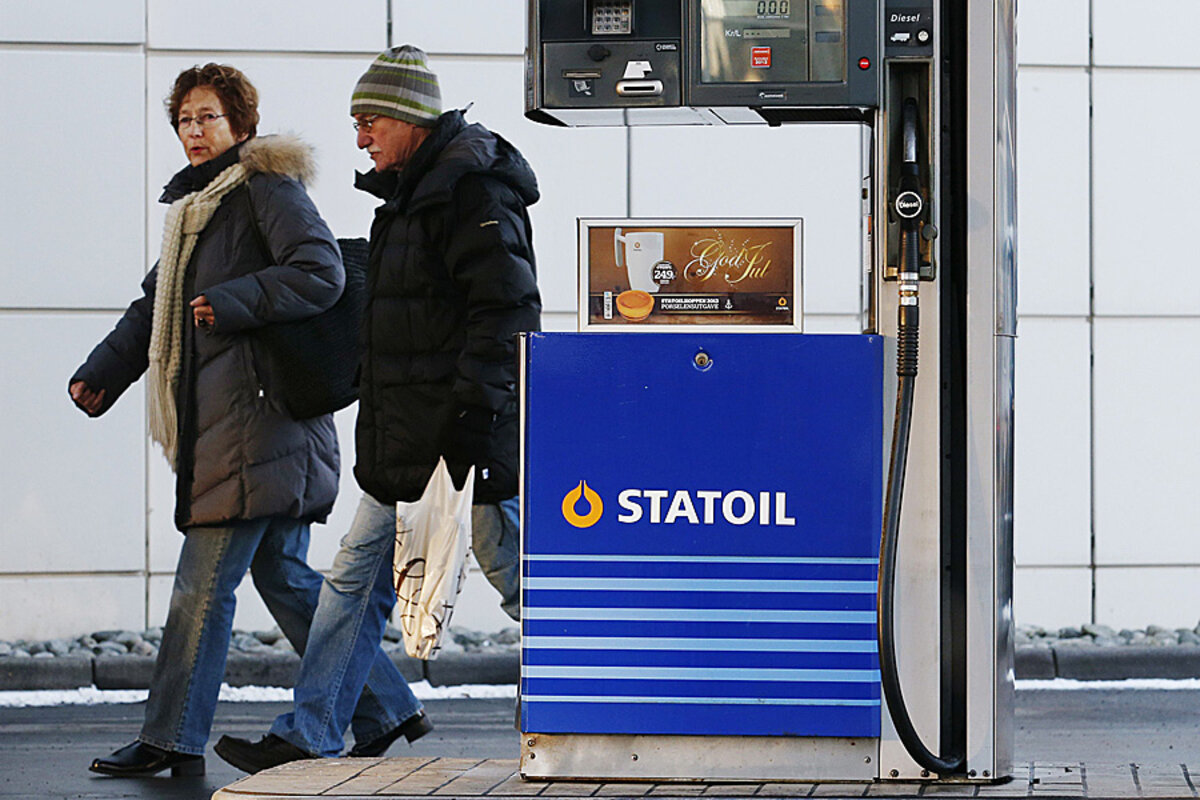Low oil prices are bad news for Norway
Loading...
New oil projects are being scrapped in Norway amid falling production and low oil prices.
Long held up as the model for managing oil abundance, Norway has painstakingly sought to prevent the problems that occur with other natural resource-based economies, such as corruption, slow economic growth, currency appreciation, and subsequently, deindustrialization.
Since 1990, Norway has diverted much of its oil earnings to a sovereign wealth fund, which has become the world’s largest. The money,����as of June 2014, amounts to $178,000 for every Norwegian citizen. The sovereign wealth fund helps Norway avoid some of the problems associated with the “resource curse” by investing capital abroad. But more importantly, the money is set aside to be saved and invested to help the country plan for the eventual decline of oil production, with the intention of transitioning to a more diversified economy that can take oil’s place.()��
The early cracks in Norway’s petrol-based economy are beginning to show, perhaps quicker than many predicted.
Energy analysts have explored in detail how the ongoing decline in oil prices –����since June – might affect oil exporting countries like Russia, Iran, Venezuela, and other OPEC members. But even Norway, the model for using natural resources to build a modern wealthy economy, is not immune to the price fall.
Statoil, the mostly government-owned oil company, has seen its share price cut in half since July 2014. It is idling several offshore rigs as oil prices drop. Three rigs – the COSL Pioneer, Scarabeo 5, and Songa Trym – will be����until the middle of 2015 because of lower profitability. “These measures are necessary due to the overcapacity of rigs compared to the assignments we are prioritising. This situation is unfortunate, and we are doing what we can to minimise the extent of the suspensions,” Statoil procurement head Jon Arnt Jacobsen said in a��.
��
To make matters worse, costs of developing new fields have been��. “The boom is probably over. But we’re not looking at a steep decline in investment or production,” Norway’s oil minister Tord Lien told����in May 2014. “The costs are rising too high and too fast. The Norwegian costs have risen a little bit more than elsewhere.” Since those comments, oil prices have tumbled. Norway may in fact see a steep decline in investment.
Lower oil prices could force more than $150 billion worth of investments to be put on hold worldwide,��by Norwegian firm Rystad Energy. Statoil is deferring a decision on investing $5.74 billion in the Snorre field, an offshore oil project in the Norwegian Sea. Also, Statoil’s Johan Castberg field, an estimated $16-$19 billion oil field in the Barents Sea, will be tabled for the time being. These costly projects won’t generate a sufficient return given today’s prices.
But the oil price decline is only accelerating a trend that is already underway. Even with high oil prices Norway was facing a tougher future due to years of waning oil production. Since 2001, Norway’s oil��, from around 3.5 million barrels per day down to about 1.8 or 1.9 million bpd in 2014.
The decline in investment is already pinching the labor market. Around 10,000 Norwegian oil workers have been laid off as the industry pares back spending, accounting for 10 percent of the sector’s total workforce, the��. Oil workers are����unless the government steps in to stem further losses.
And the way forward is murky. Despite its best efforts, Norway’s economy is overwhelmingly dependent on oil, which accounts for��of the country’s exports. Other export industries have����to develop as costs are too high – a classic symptom felt in countries suffering from the resource curse.()��
But resuscitating the sector may be difficult. With such a high cost environment, it doesn’t make sense for many companies in Norway to invest in new projects. Spending����by another 18 percent next year as project economics look poor.
Conversely, without investment, new production will not materialize in the coming years, leading to further deterioration for the sector as existing fields age and decline.
To be sure, Norway has its almost $1 trillion sovereign wealth fund to fall back on, so it is not as if its citizenry will be thrust into poverty anytime soon. Still, Norway may need to begin building a post-oil economy sooner than it thought.
By Nick Cunningham of Oilprice.com
More Top Reads From Oilprice.com:
Source:��




